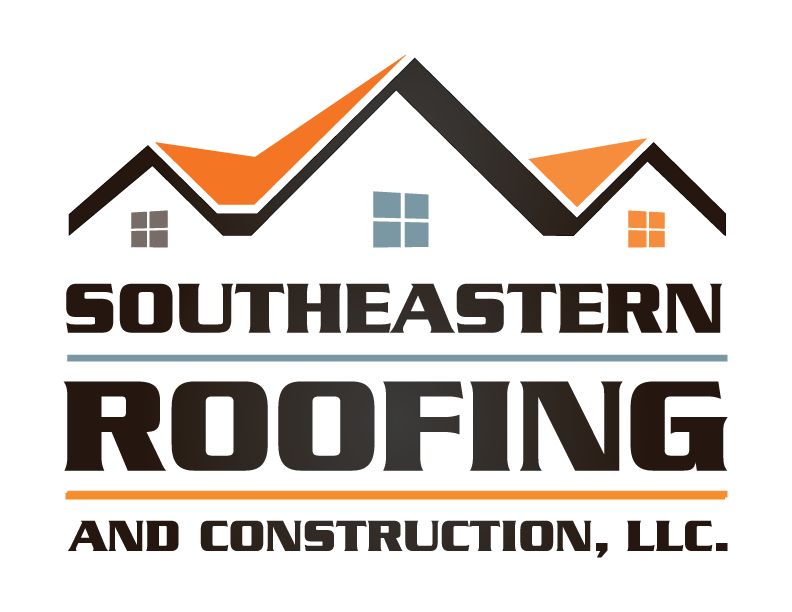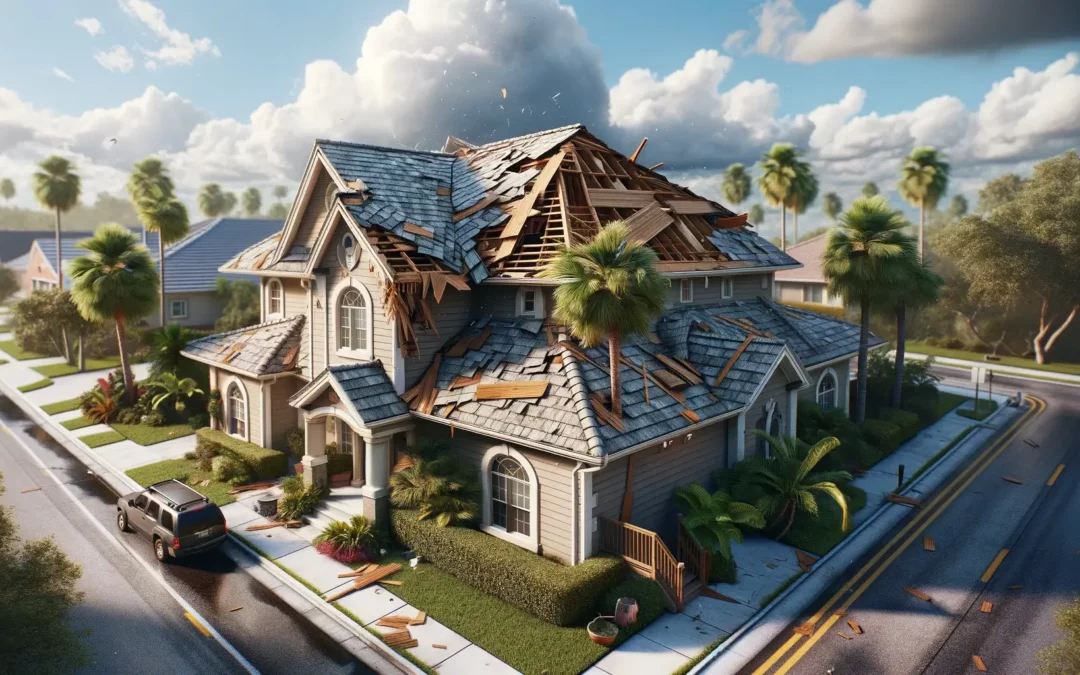Are you aware of the signs indicating severe roof damage?
We’ve compiled a comprehensive guide to help you identify these signs.
From missing or loose shingles to leaks and water stains, our article covers it all.
With our expertise, we aim to equip you with the necessary knowledge to protect or restore your roof.
Join us on this journey of belonging and safeguarding your home.
Key Takeaways
- – Missing or loose shingles, cracked or curled shingles, and sagging or uneven roof surfaces are all signs of severe roof damage.
- – Leaks, water stains, and damaged flashing can also indicate severe roof damage.
- – Timely inspections, repairs, and proper ventilation are crucial for preventing and addressing roof damage.
- – Mold and moss growth on the roof should be taken seriously and remediated promptly to prevent further damage.
Missing or Loose Shingles
When inspecting for severe roof damage signs, we noticed several missing or loose shingles. This is a clear indication that the roof requires maintenance and shingle replacement.
Missing or loose shingles can expose the underlying roof structure to potential water damage, leading to leaks and further deterioration. It’s crucial to address this issue promptly to prevent more extensive damage and costly repairs.
Regular roof maintenance is essential to ensure the longevity and functionality of the roof. To replace missing or loose shingles, it’s recommended to hire a professional roofing contractor who has the expertise and necessary tools to perform the job correctly.
They’ll assess the extent of the damage, remove the damaged shingles, and install new ones, restoring the roof’s integrity and protecting your home from potential water infiltration.
Leaks and Water Stains
We have observed that leaks and water stains are common indicators of severe roof damage. Roof leaks can occur due to a variety of reasons, such as damaged shingles, cracked flashing, or clogged gutters. When water enters the roof system through these vulnerabilities, it can lead to significant water damage.
Water stains on the ceiling or walls are often a telltale sign of a roof leak. These stains can appear as discolored patches or dark spots and may expand over time if the leak isn’t addressed promptly.
It’s crucial to take immediate action when signs of roof leaks or water damage are present, as prolonged exposure to water can weaken the structure of the roof and compromise its integrity. Regular inspections and timely repairs can help prevent further damage and ensure the longevity of your roof.
Sagging or Uneven Roof Surface
When it comes to identifying severe roof damage signs, one important aspect to consider is a sagging or uneven roof surface. This can be caused by a variety of factors, such as structural issues, excessive weight on the roof, or water damage.
It’s crucial to address this problem promptly, as a sagging or uneven roof can lead to further damage if left untreated.
Causes of Roof Sagging
To identify the causes of a sagging or uneven roof surface, it’s important to understand the structural factors that can lead to this issue.
Roof sagging is often caused by several factors, including inadequate support, excessive weight, and poor construction. One common cause of roof sagging is the use of improper materials or techniques during the construction process. This can result in a weakened roof structure that’s unable to support the weight of the roof itself, as well as any additional loads such as snow or debris.
Another potential cause is the accumulation of moisture, which can lead to rot and decay in the roof’s supporting beams. Signs of roof sagging may include visible dips or depressions in the roof surface, as well as cracks in the walls or ceilings inside the building.
It’s important to address these issues promptly, as they can lead to further damage and potential collapse if left untreated.
Repairing Uneven Roof
To fix an uneven roof surface, we need to address the underlying structural issues. When a roof sags or has an uneven surface, it can lead to numerous problems, including water damage, leaks, and further deterioration of the roof.
Repairing roof leaks and preventing roof damage are essential steps in maintaining the integrity of your home. To repair an uneven roof, it’s crucial to identify the cause of the issue. This could be due to weakened or damaged roof trusses, inadequate support beams, or improper installation.
Once the underlying structural issues are identified and addressed, measures can be taken to level the roof surface and reinforce the structure. By repairing the uneven roof and ensuring its stability, you can prevent further damage and protect your home from potential water leaks and structural issues.
Now, let’s move on to discussing the next topic: damaged flashing or chimney.
Damaged Flashing or Chimney
We frequently encounter damaged flashing or chimney during our roof inspections. Damaged flashing can lead to leaks and water damage, while a damaged chimney can compromise the structural integrity of your roof.
When it comes to damaged flashing repair, it’s important to address the issue promptly to prevent further damage. This involves inspecting the flashing for signs of wear and tear, such as cracks or gaps, and replacing any damaged sections.
Chimney inspection is equally important, as a damaged chimney can pose a serious safety hazard. During the inspection, we assess the condition of the chimney, including the mortar joints, bricks, and flashing, and address any issues that may compromise its stability.
Regular maintenance and timely repairs are crucial to ensure the longevity of your roof and the safety of your home.
Mold or Moss Growth
Mold or moss growth on a roof can indicate severe damage and requires immediate attention. Not only does it compromise the structural integrity of your roof, but it also poses health risks to you and your family. Mold can spread rapidly and cause respiratory problems, while moss can trap moisture and lead to decay.
To address this issue, it’s crucial to engage in mold remediation and take steps to prevent moss growth. Mold remediation involves identifying the source of moisture, removing the mold, and repairing any underlying damage.
To prevent moss growth, it’s important to keep your roof clean and free from debris, trim overhanging tree branches, and ensure proper drainage. Regular inspections and maintenance can help detect and address mold or moss growth before it becomes a major problem.
Granule Loss on Shingles
One sign of severe roof damage is the loss of granules on shingles, indicating potential underlying issues. Granules on shingles serve as a protective layer against the sun’s ultraviolet radiation and provide fire resistance. Over time, however, these granules can become dislodged due to various factors such as age, weather conditions, or poor roof maintenance. Regular roof inspections are essential to identify any granule loss and address it promptly.
During a roof inspection, a professional will carefully examine the shingles for any signs of granule loss. They’ll also check for bald spots or exposed asphalt, which can further indicate the extent of the damage. If granule loss is detected, it’s crucial to consult a roofing specialist to determine the underlying cause and prevent further deterioration.
Transitioning to the next section, another sign of severe roof damage is cracked or curled shingles, which we’ll explore next.
Cracked or Curled Shingles
When it comes to identifying severe roof damage, one of the key signs to look out for is cracked or curled shingles.
There are several causes that can lead to shingle damage, such as age, weather exposure, and improper installation.
If you notice cracked or curled shingles on your roof, it’s important to address the issue promptly to prevent further damage.
Repairing cracked shingles involves replacing the damaged ones with new ones, ensuring a proper seal and alignment.
To prevent future shingle damage, regular maintenance and inspections are crucial, along with ensuring proper ventilation and drainage on your roof.
Causes of Shingle Damage
To identify the causes of shingle damage, we need to look beyond just the surface and consider the factors that can lead to cracked or curled shingles.
One of the main culprits is weathering. Over time, exposure to sun, wind, rain, and snow can cause shingles to deteriorate and become brittle. This can result in cracking and curling.
Another common cause is improper installation. If shingles aren’t properly aligned or secured, they’re more likely to crack or curl.
Additionally, poor ventilation in the attic can contribute to shingle damage. Heat and moisture buildup can accelerate the deterioration of shingles, leading to cracks and curls.
It’s important to address these underlying causes in order to prevent shingle damage and prolong the lifespan of your roof.
Repairing Cracked Shingles
Now let’s address how we can repair cracked or curled shingles, building upon the causes of shingle damage discussed earlier.
When it comes to repairing damaged tiles, it’s important to act promptly to prevent further damage to your roof. The first step is to assess the extent of the damage.
If there are only a few cracked or curled shingles, you may be able to repair them individually. Start by carefully removing the damaged shingles, taking care not to damage the surrounding ones. Next, replace the broken shingles with new ones of the same size and material. Ensure that they’re properly secured and sealed to prevent water infiltration.
However, if the damage is extensive, it may be necessary to replace the entire section of the roof. In such cases, it’s best to consult with a professional roofing contractor to ensure a proper and long-lasting repair.
Preventing Future Shingle Damage
To prevent future shingle damage, we recommend regularly inspecting and maintaining your roof to catch any signs of cracking or curling early on. By taking proactive steps, you can prevent these issues from escalating into more significant problems, such as roof leaks or compromised shingle durability.
Regular inspections are crucial in identifying any potential shingle damage. Look for cracks or fractures on the surface of the shingles, as well as any signs of curling or lifting at the edges. If you notice any of these issues, it’s essential to address them promptly to prevent further damage.
Maintaining shingle durability is another key aspect of preventing future damage. Ensure that your roof is properly ventilated to prevent excessive heat build-up, which can cause shingles to become brittle and prone to cracking. Additionally, keep your gutters clean and free from debris to allow for proper water drainage and prevent water damage to the shingles.
By being diligent in inspecting and maintaining your roof, you can prevent future shingle damage and avoid the need for costly repairs or replacements.
Now, let’s move on to discussing the potential interior damage or visible daylight that may indicate severe roof damage.
Interior Damage or Visible Daylight
How can we easily identify severe roof damage?
One of the key indicators is interior damage. Conducting an interior damage assessment is crucial for determining the extent of the roof damage. Start by inspecting the ceilings and walls for any signs of water stains, discoloration, or peeling paint. These are clear indicators that water has penetrated through the roof and caused damage inside the house.
Additionally, visible daylight is another telltale sign of severe roof damage. During the daytime, turn off all lights and carefully inspect the attic or crawl space for any areas where daylight is visible. This indicates that there are gaps or holes in the roof that need immediate attention.
Conclusion
In conclusion, identifying severe roof damage signs is crucial in order to protect your home and your loved ones. While some may argue that it’s expensive to repair a damaged roof, the emotional and financial cost of not addressing the problem can be far greater.
By being proactive and attentive to the warning signs, you can ensure the safety and longevity of your home. Don’t wait until it’s too late, take action now to avoid further damage and potential disasters.

